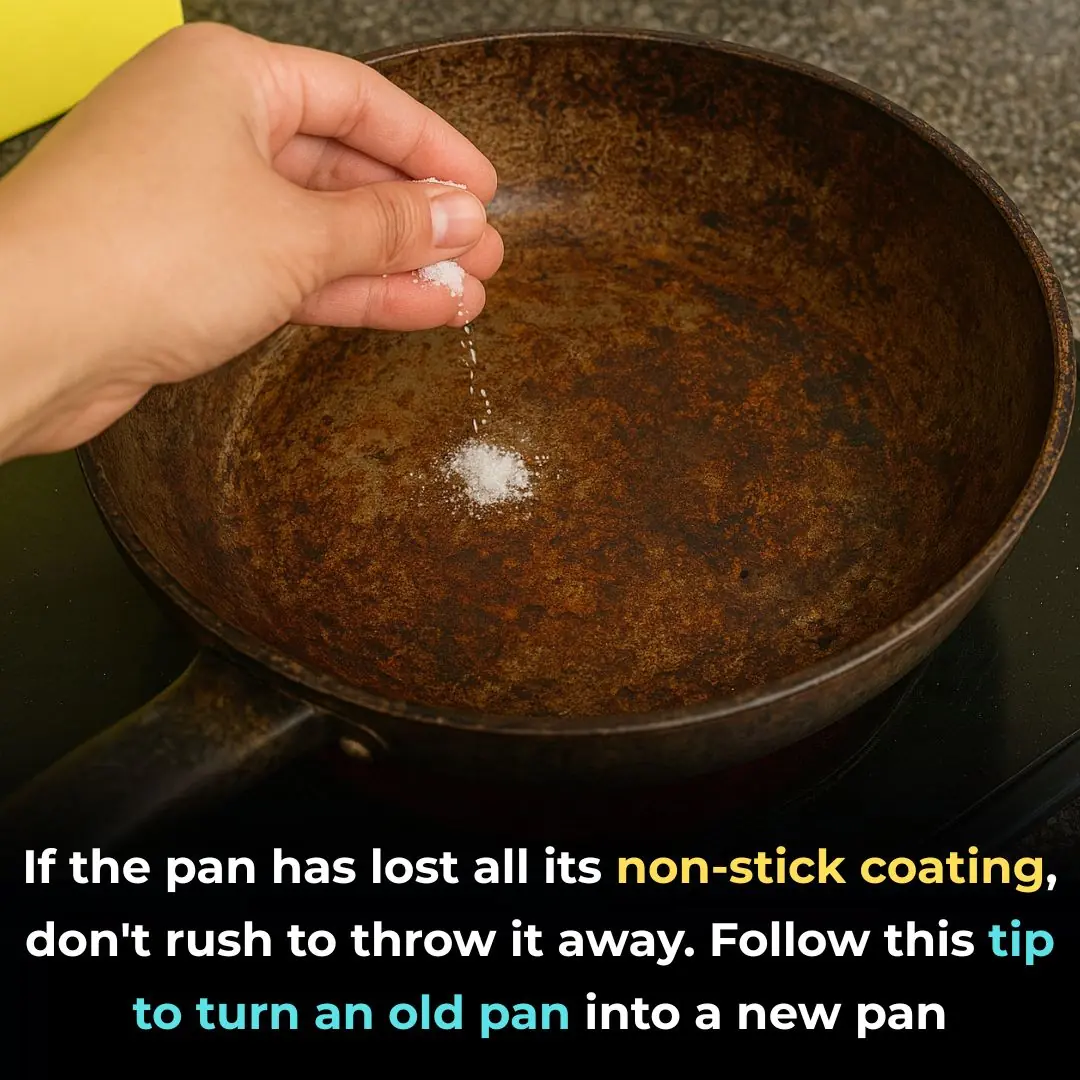
Most do this wrong. 10 dairy items you’re storing incorrectly

Dairy products are kitchen staples in households all over the world. From creamy milk and rich butter to flavorful cheeses and smooth yogurt, these versatile ingredients bring depth and comfort to countless recipes. Yet, despite their everyday use, many people unknowingly store dairy products the wrong way — leading to reduced shelf life, off flavors, and even food safety issues.
Improper storage doesn’t just affect taste; it can also cause spoilage, waste, and potentially harmful bacteria growth. Understanding the proper storage techniques for each type of dairy product helps you protect both your food and your health.
In this article, we’ll explore eleven common dairy items that are often stored incorrectly, along with smart, science-based tips to help you preserve their quality, freshness, and flavor for longer.
1. Butter: Why It Belongs in the Fridge
Many people like to keep butter on the counter for easy spreading, but this convenience can come at a cost. Butter contains milk fats that can go rancid when exposed to warm temperatures, air, and light for too long. While salted butter can last a bit longer at room temperature, unsalted butter is especially vulnerable to spoilage.
Better method: Keep the majority of your butter refrigerated, ideally in its original wrapper or an airtight container to prevent it from absorbing other food odors. Stored properly, it can last up to three months in the fridge and even longer in the freezer.
If you prefer soft, spreadable butter, keep a small portion (enough for a few days) in a covered butter dish at room temperature — and replace it regularly to ensure freshness.
2. Milk: Keep It Off the Fridge Door
It’s common to store milk in the refrigerator door for convenience, but that’s actually one of the warmest spots in your fridge. The door area experiences frequent temperature fluctuations every time it’s opened, which can cause milk to spoil several days earlier than it should.
Better method: Store milk on a middle or lower interior shelf, where the temperature is stable — ideally around 37°F (3°C). Always make sure the cap or carton is sealed tightly to prevent milk from absorbing strong odors or flavors from nearby foods. These small steps can extend freshness by up to a week.
3. Yogurt: Don’t Leave It Uncovered
Yogurt is rich in beneficial bacteria that keep it tangy and healthy. Leaving the container open allows unwanted bacteria and odors to seep in, compromising both flavor and safety.
Better method: Reseal yogurt tightly after every use or transfer leftovers into a clean, airtight container. Store yogurt at the back of the fridge, where it stays coldest, to maintain its texture and beneficial cultures. Properly stored, yogurt often stays fresh for up to a week past its sell-by date.
For family-sized tubs, avoid “double dipping” with a used spoon, which introduces bacteria and accelerates spoilage.
4. Cheese: Skip the Cling Film
Wrapping cheese in plastic wrap might seem like a good idea, but it actually suffocates the cheese and traps excess moisture, encouraging mold growth. Cheese is a living food — it needs to breathe to stay fresh.
Better method: Wrap cheese in wax paper, parchment paper, or specialized cheese paper, which allow for slight airflow while keeping humidity balanced. Then, place it in a partially sealed plastic bag or container to prevent drying out.
Hard cheeses like cheddar or gouda can last several weeks this way, while soft cheeses such as brie or camembert should be eaten within one to two weeks of opening.
5. Sour Cream: The Upside-Down Trick
Sour cream can spoil easily if air or bacteria get inside the container. One clever trick is to store it upside down in the fridge. This creates a mini vacuum seal that slows bacterial growth.
Better method: Keep sour cream in its original container, tightly sealed, and place it on a cold shelf — not in the door. If you see a little liquid separation on top, just stir it back in before using. With proper care, sour cream can stay fresh for up to three weeks beyond the sell-by date.
6. Cottage Cheese: Keep It Airtight
Cottage cheese is a fresh dairy product with high moisture content, making it highly perishable. Once opened, it can absorb odors and lose its creamy texture quickly.
Better method: Always store cottage cheese in its original, tightly sealed container or transfer it to an airtight glass or plastic container. Place it in the middle or lower shelf of your fridge, where the temperature is most consistent. Consume within five to seven days of opening for the best flavor and texture.
You can also extend its freshness by keeping the container upside down — similar to sour cream — to minimize air exposure.
7. Eggs: Avoid the Fridge Door
Eggs are best stored in the refrigerator, but not in the door. Like milk, the temperature in the door fluctuates too much. Consistent coolness helps maintain egg freshness and prevents bacterial growth.
Better method: Keep eggs in their original carton on a middle shelf at about 40°F (4°C). The carton protects them from absorbing strong odors through their porous shells and keeps humidity balanced. Properly stored eggs can remain safe to eat for three to five weeks past the pack date.
If you’re unsure of freshness, do the float test: fresh eggs sink in water, while older ones tend to float.
8. Cream Cheese: Transfer After Opening
Once opened, cream cheese can dry out quickly or pick up unwanted refrigerator odors. The foil or tub it’s sold in doesn’t always reseal tightly enough.
Better method: After opening, transfer cream cheese to a small airtight container, smoothing the surface to remove air pockets. Store it in the coldest section of your refrigerator — not the door — and consume within 10 days. This will help preserve its creamy texture and signature tangy flavor.
For long-term storage, cream cheese can also be frozen, though the texture becomes slightly crumbly when thawed — perfect for baking or cooking.
9. Ice Cream: Keep It Ultra-Cold
Ice cream’s texture depends on consistent freezing. When stored in fluctuating temperatures — like in the freezer door — it develops ice crystals that ruin its creamy consistency.
Better method: Store ice cream in the coldest part of your freezer (0°F / -18°C or below). Press a piece of wax paper or plastic wrap directly onto the surface before closing the lid to reduce air exposure and freezer burn.
Always return ice cream to the freezer immediately after scooping, and avoid letting it melt and refreeze — that’s when those icy textures form.
10. Buttermilk: Shake and Store Properly
Buttermilk’s tangy taste and creamy texture make it a baking favorite, but it spoils easily if mishandled.
Better method: Keep buttermilk in its original container, tightly sealed, and store it on a refrigerator shelf rather than in the door. Shake it before each use to evenly mix the liquid and solids. Properly stored, it stays fresh for up to two weeks.
If you can’t finish it in time, freeze leftover buttermilk in ice cube trays — perfect for measuring out later in recipes.
11. Whipped Cream: Keep It Stable and Clean
Whipped cream is light, airy, and delicate — but it loses its volume and texture quickly if exposed to air or moisture.
Better method: Store homemade whipped cream in an airtight container in the coldest part of your fridge. For extra stability, add a small amount of gelatin, cornstarch, or instant pudding mix during whipping to help it hold its shape.
For store-bought cans, always wipe and clean the nozzle after each use to prevent buildup and bacteria. Use whipped cream within two to three days for the freshest flavor.
Final Thoughts
Proper dairy storage is about more than just keeping food cold — it’s about maintaining quality, nutrition, and safety. Each product has its own unique needs, and small adjustments can make a huge difference in taste and longevity.
By following these storage tips, you’ll reduce waste, save money, and enjoy your favorite dairy products exactly as they were meant to taste: fresh, flavorful, and safe to eat.
News in the same category


My nana taught me this hack to dust ceiling fans in 3 mins with 0 work. Here’s how it works

My nana taught me this hack to lift carpet stains in 2 mins with 0 work. Here’s how it works

3 ways to prevent snakes from entering the house, everyone needs to know to protect their family

Tips to clean gas stove rust with rice water and cooking oil, seems like a joke but the effect is surprising, the stove is sparkling clean

You’re doing it all wrong. Here’s the right way to store bread

Make Your Bitter Melon Soup Sweet and Nutritious — Just Add This One Ingredient

Should You Unplug Your Rice Cooker After the Rice Is Cooked?

Most do this wrong. 10 vegetables you’re storing the wrong way

Most do this wrong. 10 bedding items you’re storing wrong

5 foods you should never keep in the refrigerator door, take them out immediately before it's too late

Why are women's buttons on the left while men's are on the right?

If your pan has lost all its non-stick coating, don't be quick to throw it away; follow this method and your pan will be like new again.

When washing clothes, don't just add detergent; here's a little tip for you: dirty clothes will look like new.

Mosquitoes are very afraid of this liquid; placing a bowl in the room keeps them from buzzing around all night.

Don't throw away rotten tomatoes, the rottener the tomatoes, the more useful they are if you know these uses

Here's how to open a can in an emergency (this is so simple!)

When buying avocado, don't be greedy for big fruit or you'll "waste money", choose this point to get the most delicious and supple one.

98% of people don't know what the hole in a safety pin is for
News Post

8 reasons why adding baking soda to your toilet tank is a must-do trick

My nana taught me this hack to dust ceiling fans in 3 mins with 0 work. Here’s how it works

My nana taught me this hack to lift carpet stains in 2 mins with 0 work. Here’s how it works

YouTubers spend $10,000 unboxing three jet boats from Temu and are in shock at what's delivered

Netflix star issues message to MrBeast after claims YouTube star is opening his own bank

Remembering Lee Elder, A Trailblazer Who Broke Barriers In Golf

‘Towanda Was Right’: Tamar Braxton Lands In the Hot Seat After Cozy Onstage Moment with Toni Braxton’s Husband Birdman

The Elephant That Never Forgot.

The Man Who Never Stopped Living.

The Cry in the Cane Field: A Mother Leopard’s Reunion.

The Diver Who Never Came Back: The Story of Saman Kunan.

The Girl Who Refused to Give Up: Yulia’s Story of Survival and Courage.

Camille’s Fight: The Girl Who Named Her Tumor and Found Her Courage.

A Dance for Daddy: The Soldier Who Stepped In When a Little Girl Needed Him Most.

The Man Who Gave a Turtle Its Freedom Back.

To the Ones Who Show Up: A Mother’s Letter to the Teachers Who Stand Between Our Children and the World.

The Whale Behind Them: A Once-in-a-Lifetime Encounter at San Ignacio Lagoon.

Red Onion for Hair Growth: How This Overlooked Natural Remedy Can Stop Hair Fall and Boost Thickness Fast

3 ways to prevent snakes from entering the house, everyone needs to know to protect their family
